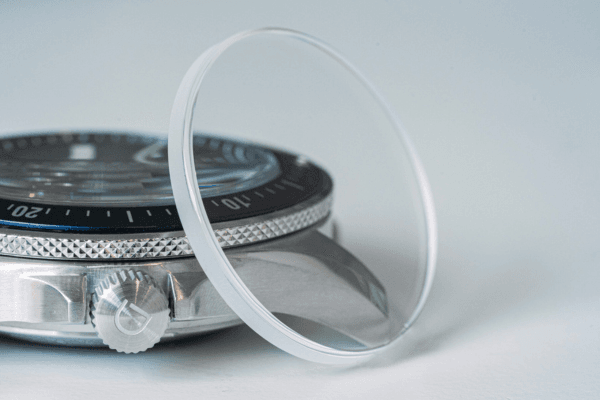
Choosing the right watch involves considering various components, including the type of watch glass. The two most popular types of watch glass are crystal and sapphire. Both have their advantages and disadvantages, and the choice between them can significantly impact the durability, clarity, and overall quality of the watch. In this guide, we’ll compare crystal and sapphire watch glass to help you determine which is better suited for your needs.
What is Crystal Watch Glass?
Crystal watch glass, often referred to as mineral glass, is made from silica and is treated with heat to improve its hardness. It’s a popular choice for many watch manufacturers due to its cost-effectiveness and reasonable durability.

Advantages of Crystal Watch Glass:
- Cost-Effective: Generally less expensive than sapphire glass, making it a budget-friendly option.
- Reasonable Durability: Offers good resistance to everyday wear and tear, including minor scratches and impacts.
- Replaceability: Easier and cheaper to replace if damaged compared to sapphire glass.
Disadvantages of Crystal Watch Glass:
- Scratch Resistance: More prone to scratches compared to sapphire glass.
- Clarity: Over time, scratches can reduce the clarity and visibility of the watch face.
What is Sapphire Watch Glass?
Sapphire watch glass is made from synthetic sapphire, a lab-created material that mimics the properties of natural sapphire. It is renowned for its exceptional hardness and scratch resistance, making it a premium choice for high-end watches.

Advantages of Sapphire Watch Glass:
- Scratch Resistance: Extremely resistant to scratches, maintaining its clarity and appearance over time.
- Durability: Highly durable and resistant to most impacts, providing long-lasting protection for the watch face.
- Clarity: Maintains superior clarity and brilliance, enhancing the overall aesthetic of the watch.
Disadvantages of Sapphire Watch Glass:
- Cost: Significantly more expensive than crystal glass, increasing the overall price of the watch.
- Shatter Resistance: While highly scratch-resistant, sapphire glass is more prone to shattering upon severe impact compared to crystal glass.
- Replaceability: More expensive to replace if damaged due to its higher cost and complexity.
Key Comparisons
1. Scratch Resistance:
- Crystal: Prone to scratches, which can accumulate over time.
- Sapphire: Highly resistant to scratches, maintaining a pristine appearance.
2. Durability:
- Crystal: Offers good durability for everyday use but can be scratched more easily.
- Sapphire: Extremely durable against scratches but more susceptible to shattering from severe impacts.
3. Cost:
- Crystal: More affordable, making it a cost-effective option.
- Sapphire: Higher cost, reflecting its premium quality and superior properties.
4. Clarity:
- Crystal: Clarity can diminish with scratches and wear.
- Sapphire: Maintains excellent clarity and brilliance over time.
5. Replacement:
- Crystal: Easier and cheaper to replace.
- Sapphire: More costly and complex to replace if damaged.
Which is Better?
The choice between crystal and sapphire watch glass depends on your priorities and budget.
If you prioritize scratch resistance and long-term clarity and are willing to invest in a higher-end watch, sapphire glass is the superior option. Its durability against scratches and enhanced aesthetic appeal make it ideal for luxury watches and long-term use.
If you are looking for a more budget-friendly option that offers reasonable durability and ease of replacement, crystal glass is a practical choice. It provides good protection for everyday wear and is more affordable to replace if needed.
Conclusion
Both crystal and sapphire watch glass have their unique benefits and drawbacks. Understanding these differences can help you make an informed decision based on your needs, preferences, and budget. Whether you opt for the affordability and practicality of crystal glass or the premium quality and durability of sapphire glass, choosing the right watch glass will enhance your overall experience and satisfaction with your timepiece.
Post Comment